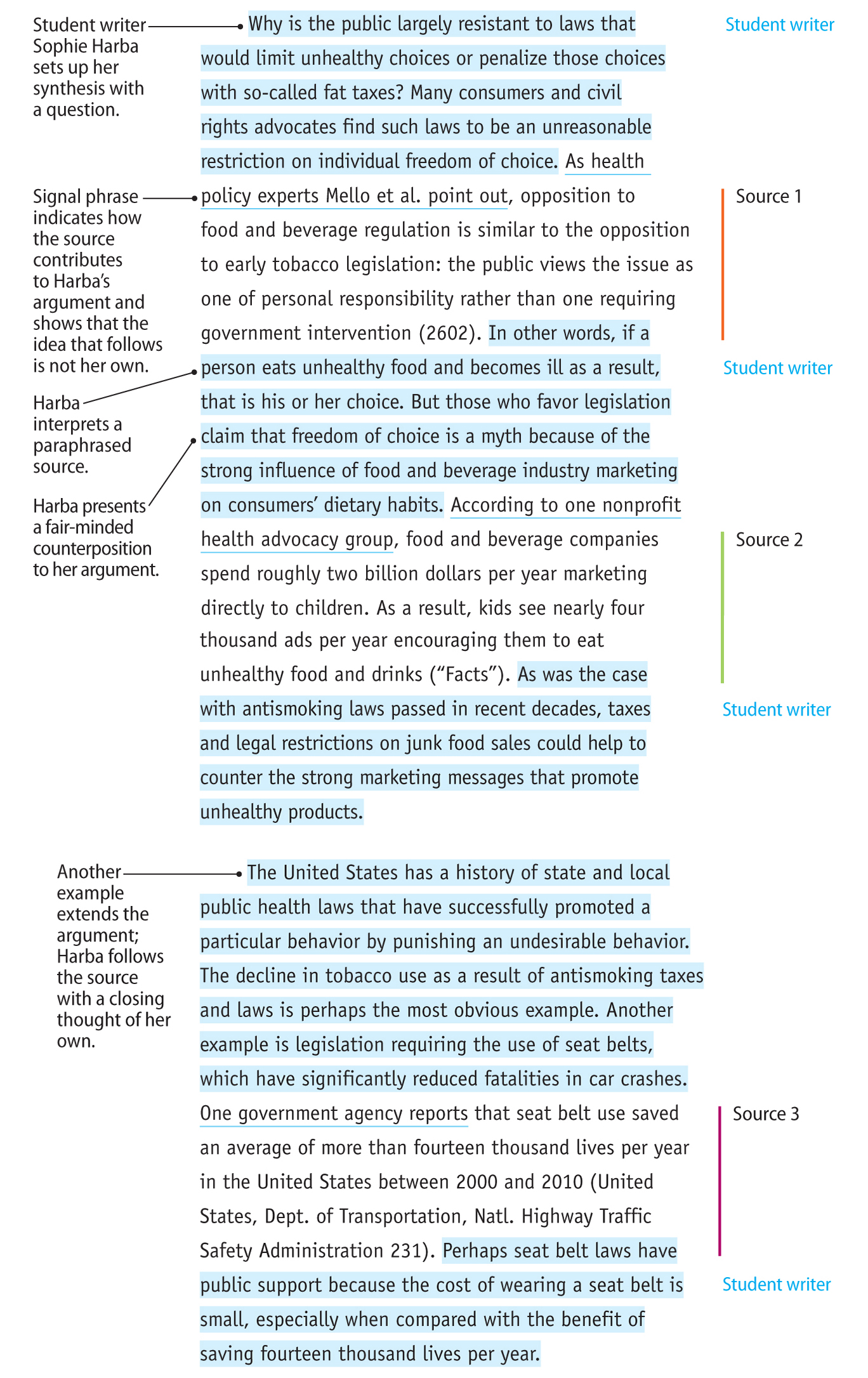MLA-3c: Synthesizing sources
When you synthesize multiple sources in a research paper, you create a conversation about your research topic. You show readers that your argument is based on your active analysis and integration of ideas, not just a series of quotations and paraphrases. Your synthesis will show how your sources relate to one another. Not every source has to “speak” to another in a research paper, but readers should be able to see how each one functions in your argument (see R3-a).
Considering how sources relate to your argument
Before you integrate sources and show readers how they relate to one another, consider how each one might contribute to your own argument. As student writer Sophie Harba became more informed about her research topic, she asked herself these questions: What have I learned from my sources? Which sources might support my ideas or illustrate the points I want to make? What common counterarguments do I need to address to strengthen my position? She annotated a passage from one of her sources—a nonprofit group’s assertion that our choices about food are skewed by marketing messages.
student notes on a source

Placing sources in conversation
You can show readers how the ideas of one source relate to those of another by connecting and analyzing the ideas in your own voice. After all, you’ve done the research and thought through the issues, so you should control the conversation. When you effectively synthesize sources, the thread of your argument should be easy to identify and to understand, with or without your sources.
SAMPLE SYNTHESIS

In this synthesis, Harba uses her own analysis to shape the conversation among her sources. She does not simply string quotations together or allow them to overwhelm her writing. She guides her readers through a conversation about a variety of laws that could promote and have promoted public health. She finds points of intersection among her sources, acknowledges the contributions of others in the research conversation, and shows readers, in her own voice, how the various sources support her argument.
When synthesizing sources, ask yourself the following questions:
- Which sources inform, support, or extend your argument?
- Have you varied the function of sources—to provide background, to explain concepts, to lend authority, and to anticipate counterarguments?
- Do you explain how your sources support your argument?
- Do you connect and analyze sources in your own voice?
- Is your own argument easy to identify and to understand, with or without your sources?
Reviewing an MLA paper: Use of sources
Use of quotations
- Have you used quotation marks around quoted material (unless it has been set off from the text)? (See MLA-2c.)
- Have you checked that quoted language is word-for-word accurate? If it is not, do ellipsis marks or brackets indicate the omissions or changes? (See MLA-3a.)
- Does a clear signal phrase (usually naming the author) prepare readers for each quotation and for the purpose the quotation serves? (See MLA-3b.)
- Does a parenthetical citation follow each quotation? (See MLA-4a.)
- Is each quotation put in context? (See MLA-3b.)
Use of summaries and paraphrases
- Are summaries and paraphrases free of plagiarized wording—not copied or half-copied from the source? (See MLA-2d.)
- Are summaries and paraphrases documented with parenthetical citations? (See MLA-4a.)
- Do readers know where the cited material begins? In other words, does a signal phrase mark the boundary between your words and the summary or paraphrase? Or does the context alone make clear exactly what you are citing? (See MLA-3b.)
- Does a signal phrase prepare readers for the purpose the summary or paraphrase has in your argument?
Use of statistics and other facts